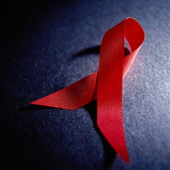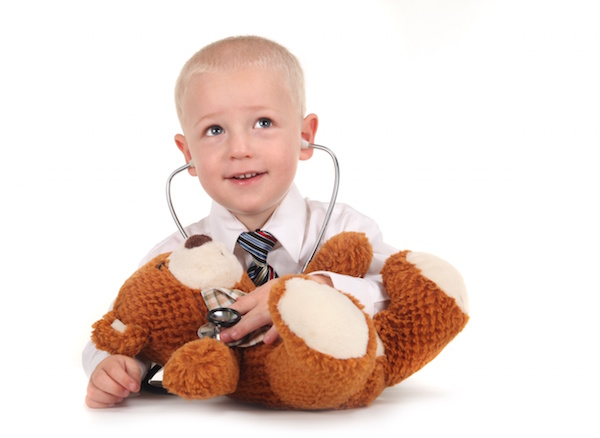
TUESDAY, Dec. 24 (HealthDay News) — The effect that AIDS is having on American kids has improved greatly in recent years, thanks to effective drugs and prevention methods. The same cannot be said, however, for children worldwide.
“Maternal-to-child transmission is down exponentially [in the United States] because we do a good job at preventing it,” said Dr. Kimberly Bates, director of a clinic for children and families with HIV/AIDS at Nationwide Children’s Hospital in Columbus, Ohio. In fact, the chances of a baby contracting HIV from his or her mother is now less than 1 percent in the United States, according to the U.S. Centers for Disease Control and Prevention.
Still, concerns exist. “In a subset of teens, the number of infections are up,” Bates said.
“We’ve gotten very good at minimizing the stigma and treating HIV as a chronic disease, but what goes away with the acceptance is some of the messaging that heightens awareness of risk factors,” she said. “Today, people are very unclear about what their actual risk is, especially teens.”
Increasing awareness of the risk of HIV, the virus that causes AIDS, is one goal that health experts hope to attain.
Across the globe, the AIDS epidemic has had a harsher effect on children, especially those in sub-Saharan Africa. According to the World Health Organization, about 3.4 million children worldwide had HIV at the end of 2011, with 91 percent of them living in sub-Saharan Africa. Children with HIV/AIDS usually acquired it from HIV-infected mothers during pregnancy, birth or breast-feeding.
Interventions that can reduce the odds of mother-to-child transmission of HIV aren’t widely available in developing countries. And, the treatment that can keep the virus at bay — known as antiretroviral therapy — isn’t available to the majority of kids living with HIV. Only about 28 percent of children who need this treatment are getting it, according to the World Health Organization.
In the United States, however, the outlook for a child or teen with HIV is much brighter.
“Every time we stop to have a discussion about HIV, the news gets better,” Bates said. “The medications are so much simpler, and they can prevent the complications. Although we don’t know for sure, we anticipate that most teens with HIV today will live a normal life span, and if we get to infants with HIV early, the assumption is that they’ll have a normal life span.”
For kids, though, living with HIV still isn’t easy.
“The toughest part for most young people is the knowledge that, no matter what, they have to be on medications for the rest of their lives,” she said. “If you miss a dose of diabetes medication, your blood sugar will go up, but then once you take your medicine again, it’s fine. If you miss HIV medication, you can become resistant.”
The medications also are pricey. However, Bates said, a federal program made possible by the Ryan White CARE Act helps people who can’t afford their medication get help paying for it.
Then there are the side effects. “Every medicine has side effects, and there are at least three separate medications for HIV,” Bates said. “They can cause a disruption of sleep, diarrhea, and abdominal issues. They can be toxic to the kidneys and liver. The healthier people are, the better able they are to tolerate the side effects, and we have other therapies that can help minimize some of the side effects.”
There’s also concern about how these medications might affect growing children and their developing brains, she said.
Nonetheless, “we’re very happy to have the luxury of thinking about what we need to do to make the best life for a child with HIV,” Bates said. “We used to be planning for a child’s death.”
Children with HIV are generally well-accepted today in U.S. communities, unlike the reception some received in the past. Because most children are being treated, their viral load — referring to the level of HIV in the blood — is often undetectable, which means the chance of HIV transmission is very low.
“Folks in the community are probably a greater risk to a child with HIV, because of all the infections they can give them, than a child with HIV is to them,” Bates said.
Yet as far as health care has come in the treatment of HIV, a cure remains elusive. In the spring, researchers reported that, for the first time, a baby had achieved long-term remission of HIV after receiving treatment for HIV within 30 hours of birth.
Though touted by some as a cure for HIV, the researchers remain cautious. At least in part, that could be because HIV doesn’t act in the same way in every person, Bates explained.
“Some people have the ability to fight off the virus even without any medication, and that’s a positive thing for those people and we’re really looking at those people to get an idea of how we might be able to better target the virus,” she said. “When we get to the point where there’s a cure for HIV, I think it will be like the polio vaccine. It will still exist in some places, but it will be exceedingly rare.”
In the meantime, one nearly surefire way to prevent new infections in children is to get expectant mothers who are HIV-positive on antiretroviral therapy.
“The ideal situation is for someone who knows she’s HIV-positive, who has planned her pregnancy, to decrease her viral load as low as possible without medications that we don’t recommend in pregnancy,” said Dr. Geralyn O’Reilly, a maternal-fetal medicine specialist at Sinai Hospital in Baltimore.
“Unfortunately, we have a lot of patients who get diagnosed with their first prenatal blood draw,” she said. “As soon as we can, we get them on antiretroviral therapy, which helps tremendously to keep the transmission rates down.”
Depending on how well the medication reduces a woman’s viral load, she may be able to give birth vaginally. If the viral load is too high, a cesarean birth is scheduled because that further reduces the chance of transmitting the virus.
“It’s never too late,” O’Reilly said. “Even if a woman had no prenatal care, there are ways we can try to prevent transmission of HIV.”
More information
Learn more about HIV/AIDS on the AIDS.gov website, sponsored by the U.S. Department of Health and Human Services.
This HealthDay story tells about a mother and daughter who campaign against HIV transmission.
Copyright © 2025 HealthDay. All rights reserved.

